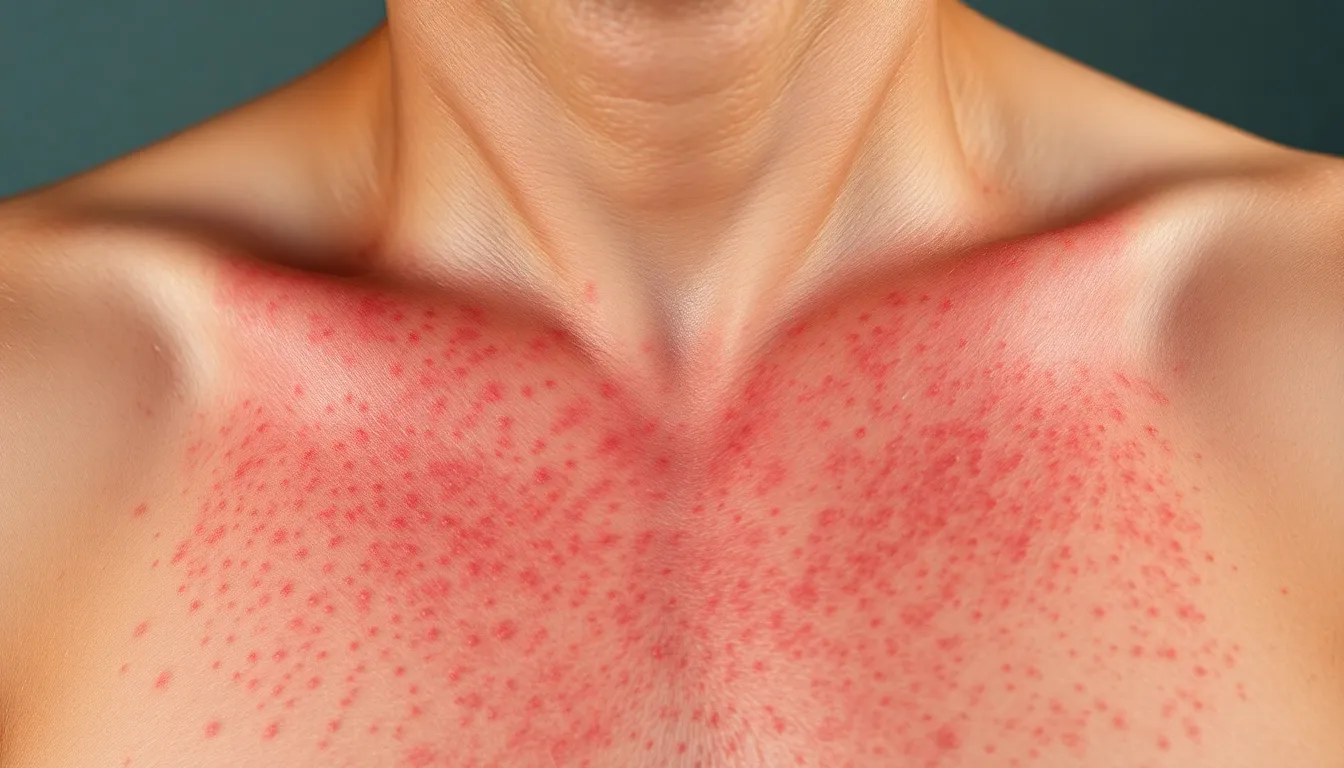Heat rash can feel like a cruel joke played by summer itself. That annoying, itchy red patch on your skin doesn’t just ruin your day; it can make you question your life choices—like why you thought wearing that cute but constricting outfit was a good idea. Thankfully, there’s hope!
Table of Contents
ToggleUnderstanding Heat Rash
Heat rash manifests as red and itchy bumps, primarily in areas prone to sweating. It often occurs when sweat ducts become blocked, leading to discomfort and irritation.
What Is Heat Rash?
Heat rash, known as miliaria, develops when sweat can’t reach the skin surface. Symptoms may include tiny red bumps or blisters, which often itch or tingle. This condition frequently appears in folds of skin, such as armpits and groin areas, particularly in hot, humid weather. Individuals of all ages can experience heat rash, but it is especially common in infants.
Causes of Heat Rash
Several factors contribute to the onset of heat rash. Excessive sweating during hot weather often leads to clogged sweat glands. Tight clothing that traps moisture against the skin can exacerbate symptoms, making irritation more likely. High humidity also plays a significant role, preventing sweat from evaporating effectively. Additionally, certain skin products may irritate the skin further, increasing the likelihood of developing heat rash.
Symptoms of Heat Rash

Heat rash primarily appears as red, itchy bumps on the skin. Understanding its symptoms can help address the discomfort more effectively.
Common Signs
Common signs of heat rash include small red bumps or blisters. These may appear on areas such as the armpits, groin, and neck. Itching often accompanies the rash, and the skin can feel irritated. In some cases, a tingling sensation may also occur. Sometimes, heat rash appears instantly during hot, humid weather. Individuals may notice an increase in irritation with sweat or tight clothing.
Severity Levels
Severity levels of heat rash can vary significantly. Mild cases include minor redness and a few bumps. Moderate instances may involve widespread irritation and substantial itching. Severe cases can lead to extensive blistering and intense discomfort. Complications may arise if heat rash becomes infected. Recognizing when symptoms worsen is essential for seeking appropriate treatment. Effective management depends on understanding these levels of severity.
Treatment Options for Heat Rash
Heat rash can often be managed effectively with various treatment options. These approaches help alleviate discomfort and promote healing.
Home Remedies
Cool compresses provide immediate relief. Applying a cool, damp cloth to the affected area reduces itching. Aloe vera gel works as a soothing agent, often helping to calm irritation. Oatmeal baths can also be beneficial; they soothe the skin and reduce inflammation. Wearing loose-fitting, breathable clothing allows sweat to evaporate, minimizing further blockage of sweat ducts. Additionally, staying in a cool environment helps prevent the rash from worsening. Hydration plays a crucial role; drinking water can help maintain skin moisture balance. Avoiding heavy lotions or oils can prevent exacerbating the condition. Implementing these simple remedies can significantly improve comfort and expedite recovery from heat rash.
Over-the-Counter Products
Several over-the-counter products provide effective relief for heat rash discomfort.
Creams and Ointments
Calamine lotion offers soothing properties, reducing itching and irritation associated with heat rash. Hydrocortisone cream, a common anti-inflammatory, helps to decrease redness and swelling. When choosing a product, select those specifically designed for sensitive skin to avoid further irritation. Aloe vera gel serves as another option, promoting healing while keeping the skin hydrated. Products that contain menthol or camphor can create a cooling sensation, providing temporary relief from itchiness.
Antihistamines
Oral antihistamines, like diphenhydramine, alleviate itching by blocking histamine, a compound that triggers allergic reactions. Non-drowsy options, such as loratadine, allow for all-day relief without affecting daily activities. When taken as directed, these medications can help manage symptoms effectively. For best results, consult a healthcare professional before combining antihistamines with other treatments, ensuring safe use. Choose the right antihistamine based on individual reactions and preferences.
Prevention Tips
Effective strategies exist to help prevent heat rash, especially during hot and humid weather. Implementing these tips can minimize discomfort and skin irritation.
Staying Cool
Staying cool significantly reduces the risk of heat rash. Air conditioning serves as a great option for cooling indoor spaces. When outdoors, seeking shade or using portable fans can provide relief from direct sunlight. Frequent breaks in cooler areas allow the skin to breathe and recover. Drinking plenty of water keeps the body hydrated, combating excessive sweating. Adjusting activities to avoid peak heat hours, typically between noon and 3 PM, also helps maintain comfort.
Choosing Appropriate Clothing
Choosing appropriate clothing proves vital in preventing heat rash. Selecting loose-fitting garments allows air circulation, reducing sweat accumulation. Cotton and moisture-wicking fabrics provide breathability and help manage perspiration effectively. Avoiding tight clothing, especially in sweat-prone areas, minimizes irritation. Light-colored outfits reflect sunlight, keeping skin cooler. Making mindful choices in attire during hot weather can greatly reduce the likelihood of developing rashes.
Managing heat rash effectively requires a combination of immediate relief strategies and preventive measures. Utilizing home remedies like cool compresses and aloe vera can soothe irritation while over-the-counter treatments provide additional comfort. Staying cool and hydrated is crucial in preventing flare-ups, along with choosing appropriate clothing that promotes breathability.
By being mindful of these approaches, individuals can minimize the discomfort associated with heat rash and enjoy the warmer months with greater ease. Taking proactive steps not only aids in recovery but also helps in avoiding future occurrences of this pesky skin condition.




